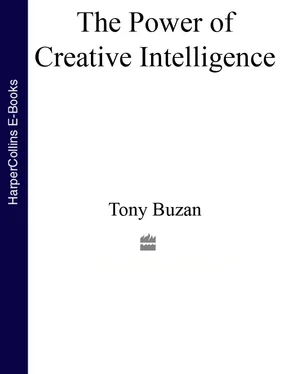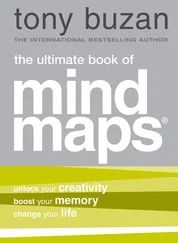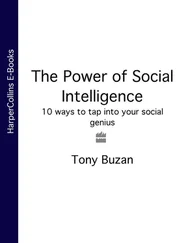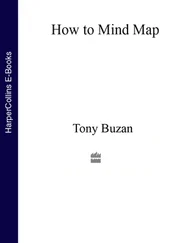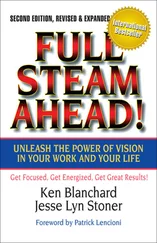Chapter Two
In this Chapter you will be given state-of-the-art information about your left and right brains, and how you can combine the two sides to multiply, phenomenally, your Creative Power.
We are going to go on a supersonic flight over the past 50 years of research on the brain. The journey starts in the laboratory of Professor Roger Sperry in California, and describes the research that won him a Nobel Prize in 1981, and which will make you delightfully aware of hidden creative capacities waiting to be unleashed by you.
In the 1950s and 1960s, Professor Sperry was investigating brainwave function. To explore different thinking activities and their effect on the brainwaves, Sperry and his colleagues asked the volunteers to perform different mental tasks, ranging from adding and subtracting numbers in their heads, through to reading poetry, reciting memorized lines, doodling, looking at different colours, drawing cubes, analysing logical problems and daydreaming.
Sperry had predicted that the brainwaves would be somewhat different for different activities, and he was correct. What he had not predicted – and this finding changed forever the way we think about the potential of the human brain and its ability to think creatively – was the following startling revelation: on average, the brain divided its activities very distinctly into ‘left brain’ (left cortex) activities and ‘right brain’ (right cortex) activities. This is the research that has become popularly known as the ‘left/right brain’ research.
The dominant division of labour was as follows:
| Left brain |
Right brain |
| Words |
Rhythm |
| Logic |
Spatial Awareness |
| Numbers |
Dimension |
| Sequence |
Imagination |
| Linearity |
Daydreaming |
| Analysis |
Colour |
| Lists |
Holistic Awareness |
Sperry also discovered that when the right cortex was active, the left tended to go into a relatively restful or meditative state. Similarly when the left cortex was active, the right became more relaxed and calm.
Furthermore, and this came as a real surprise (as well as a beacon of hope), every brain involved in this brainwave experiment was shown to have all the cortical skills in fine working order. In other words, at the basic physical, physiological and potential level, everybody had a massive range of intellectual, thinking and creative skills that they were obviously using only in part.
By the 1970s, these results had led to an explosion of further researches, studies and surveys around the nature of this untapped potential.
One obvious line of investigation (with which I was personally involved) was to survey people on what they thought about their own abilities, and then to check these perceived abilities/disabilities with their real brainwave-measured capacities.
Here is one survey for you to try yourself.
Left/Right Brain Self-check
Would you find it virtually impossible (almost genetically impossible) to calculate quickly and accurately, the proportion of interest to capital still owing on your mortgage, for example, or the area of your garden as a proportion of the total area of your house and garden? YES/NO
Would you find it virtually impossible to draw portraits that looked like the person being drawn, to paint landscapes, master dimension and perspective, understand the history of art and make realistic and abstract sculptures? YES/NO
Would you find it virtually impossible to compose music and songs, identify different classical composers by just a few notes from their works, dance to music in time, and sing songs where every note you sang was the note as it should have been sung? YES/NO
You will probably be relieved to know that over 90 per cent of people surveyed were confident that they were genetically incapable of accomplishments in these three vital areas of numerical, artistic and musical skills.
You will hopefully be pleased and encouraged to know that they were all wrong !
Subsequent research discovered that when people were trained – by good teachers – in those areas of skill that they had assumed to be weak, they suddenly became much stronger in those areas. It was very much like identifying a weak muscle group that was weak not because the muscles themselves were fundamentally incapable, but simply because they had not been used for a long time.
This was not all: in addition to everyone being able to develop areas that they had previously considered weak, another amazing finding soon began to emerge. With the new ‘mental muscle’ now in place, the other ‘mental muscles’ all began to improve their performance.
Thus, for example, if people who had been weak in imagery and art, were trained to be competent in that field, they suddenly became more skilled with words, more able to manipulate numbers and, generally, more creative. Similarly, if people who had been weak in numerical ability were trained to strengthen this area, their imagination and musical abilities also improved.
What appeared to be happening was that the left and right sides of the brain were having ‘conversations’ with each other. The left brain would receive information and send it over to the right brain, which would process the information in its own way, and then send it back to the left side, and so on. By this process the brain was synergetically building up information, and adding to its own intellectual and creative power by combining the different elements. By the early 1980s, the left/right brain paradigm was becoming known around the globe, and books were beginning to be written about this extraordinary discovery.
Then came the difficulties.
You may have heard that the left-brain activities were generally labelled as ‘intellectual’, ‘academic’, or ‘business’ activities, and that the right-brain activities were correspondingly labelled the ‘artistic’, ‘creative’, and ‘emotional’ activities.
However, if all this research is true, and if by using both sides of our brains our overall intelligence and creativity rises, then by definition the great creative geniuses must have been using the same mental process – and their whole brains. But if the above labelling of the right and left activities of the brain is correct, then academics and intellectuals such as Isaac Newton and Albert Einstein would have been ‘left brained’, and musicians and artists such as Beethoven and Michelangelo would have been ‘right brained’ – in other words, they would not have been using all of their brains at all!
More research was obviously required to shed light on this growing controversy. I and a number of other passionately curious individuals began to gather data on the great creative geniuses, and to relate it to the left/right brain model.
What do you think we found? We discovered this about ‘left-brained’ Einstein:
Case History – Albert Einstein
Albert Einstein was nominated as the greatest creative genius of the 20th century. However, he was a poor student, preferring daydreaming to studying, and was eventually expelled from school for being a ‘disruptive influence’.
As a teenager he became inspired by the imaginative side of mathematics and physics, and was equally interested by the work of Michelangelo, whom he studied in depth. These mutual interests encouraged him to play even further with his imagination, and he developed his now-famous ‘Creative Mind Games’ in which he posed himself an intriguing question, and then allowed his imagination to run riot.
Читать дальше
